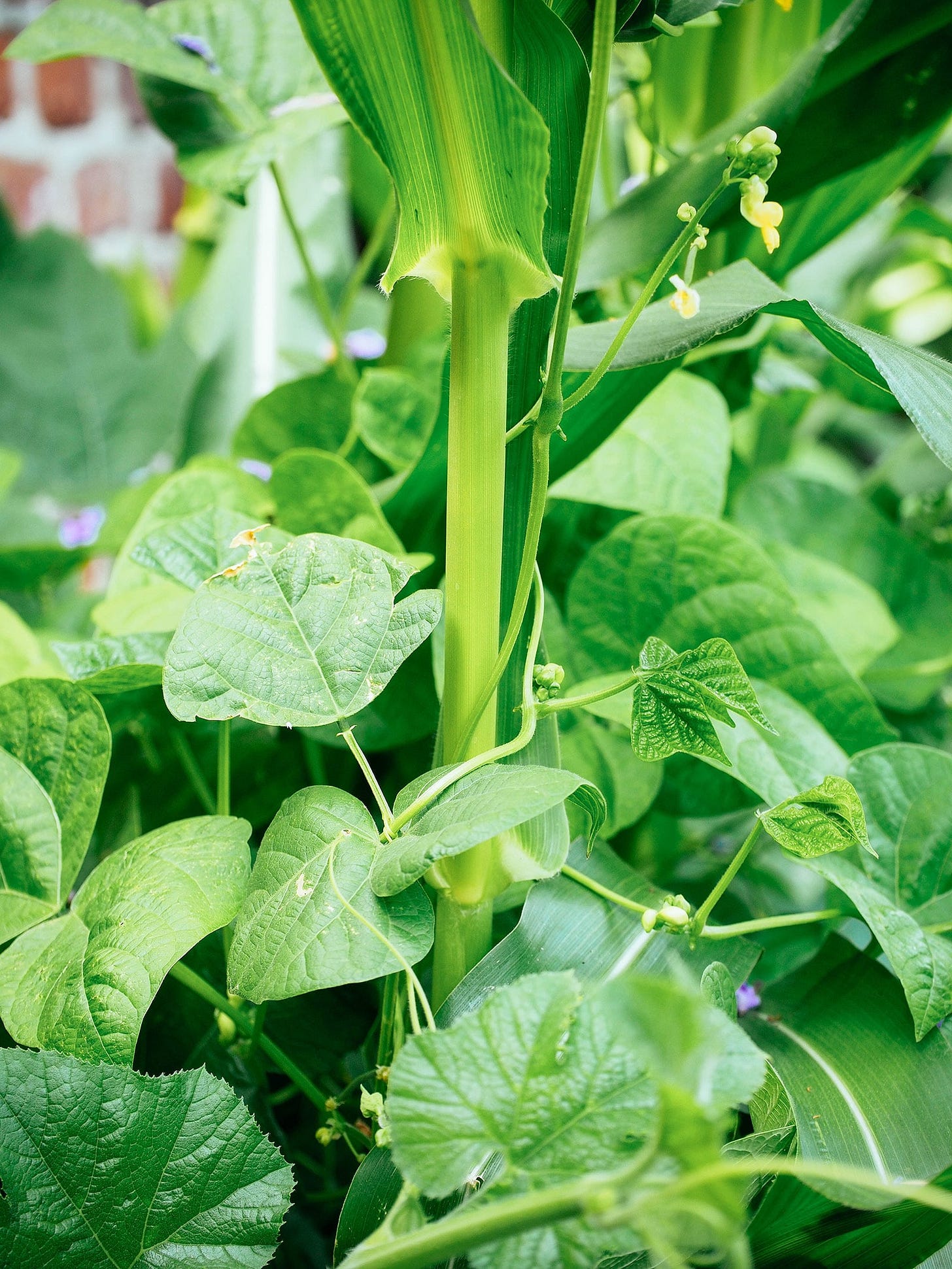Simple Three Sisters Succotash
A summery dish to delight and nourish the whole family
Hi Friends,
This week’s recipe is one that brings together three of our favorite summer vegetables: zucchini (& summer squash), corn, and fresh shelling beans. A flavorful, nutritious, and utterly delicious dish that can serve as either a main or a side fresh out of the pot, and thrives in its life as a leftover for days to come (succotash tacos? Yes, please!). Succotash is named for the Narragansett word “sahquttahhash,” meaning “broken corn kernels,” but despite fresh corn being the star of the dish, succotash nearly always contains fresh beans, and a variety of summer vegetables too. In other words, succotash can be a bit of a “kitchen sink” dish depending on the region and the season.
This version adds zucchini, not only because it is currently plentiful and we are avowed super-fans, but because squash, corn and beans are a magical trio known as The Three Sisters. Most American schoolchildren are taught that white North American colonial settlers were saved from starvation by the “gift” of maize from the Indigenous peoples. What is less discussed is the degree to which this gift was part of a nuanced and rich set of agricultural practices developed over centuries.
In the Indigenous American garden, corn, beans, and squash have a uniquely symbiotic relationship. When planted together, they become a self-sustaining architecture: corn serves as a scaffolding on which beans can freely climb, while the beans, for their part, fix nitrogen and contribute vital nutrients to their shared soil. The large leaves of squash and pumpkins create a kind of “living mulch” that protects soil hydration and offers weed and pest control. The three plants thrive better together then when planted alone. This intercropping technique was practiced on a vast scale by tribes throughout the Americas and was—in the case of The Three Sisters, specifically—interwoven with storytelling and myth.

Through the evidence of their harvests, many tribes believed that these three crops sustained human life, which has since been confirmed scientifically: when consumed together, corn, squash and beans create a complete protein1 rich in the nine complementary essential amino acids that virtually eliminate the need for meat in the diet.
Luckily, The Three Sisters are also DELICIOUS when eaten together in this simple summery succotash. Sweet, savory, and filling, this is a great make-ahead dish, one that keeps well in the fridge for a handful of days, and freezes beautifully. If you can’t find fresh shelling beans, you can use fresh or frozen lima or fava beans, or, in a pinch, dried black-eyed peas (just soak and cook them beforehand).
Fanny + Greta
Keep reading with a 7-day free trial
Subscribe to The Green Spoon to keep reading this post and get 7 days of free access to the full post archives.






